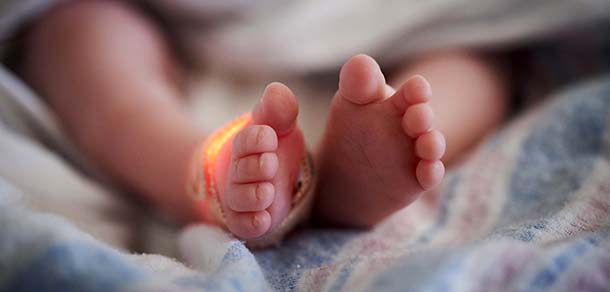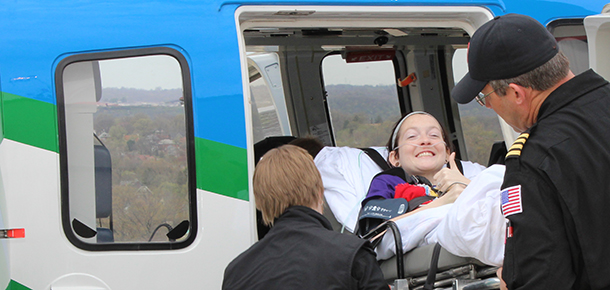The last day of the month in February is Rare Disease Day, a day in which we like to help spread awareness of little known diseases.
Today I’d like to focus on a set of childhood diseases that you’ve likely never heard of. In fact, they’re so rare that the majority of pediatricians across the country will probably never see a single case of it in their entire careers. Even most pediatric pulmonologists will likely only encounter a few of these cases during their careers.
The disease I’m referring to is childhood interstitial lung disease (ILD), a group of rare lung diseases that decrease a child’s ability to supply oxygen to the body. The disorders affect the area of lung that is in between the air sacs (called the interstitium) where gas exchange occurs. The small air tubes (called bronchioles) may also be affected. Our pediatric pulmonologists in the Rare Lung Disease Program have treated over 50 patients with childhood ILD in the past year.
ILD is an umbrella term for many different types of interstitial lung diseases, which have varying levels of severity. Some children can grow out of the disease while others may require a lung transplant.
We classify the more common interstitial lung diseases in the following three ways:
Very severe diseases, usually requiring a lung transplant:
- Surfactant Deficiency caused by mutations in Surfactant Protein B
- Alveolar Capillary Dysplasia with Misalignment of the Pulmonary Veins (ACD/MPV)
Severe diseases that may still require a lung transplant:
- Surfactant Deficiency caused by mutations in Surfactant Protein C
- Surfactant Deficiency caused by mutations in Thyroid-transcription factor (NKX2-1)
- Surfactant Deficiency caused by mutations in the ATP-binding cassette transporter A3 (ABCA3)
Less severe diseases that usually improve over time and do not require a lung transplant:
- Alveolar simplification
- Neuroendocrine cell hyperplasia of infancy (NEHI)
- Pulmonary interstitial glycogenosis (PIG)
The majority of children who have the most severe form of ILD will begin to show complications within a day or two (or even immediately) after birth. They become very sick and will need to be placed on a machine (a ventilator) to help them breathe because of rapid breathing (more than 50-60 breaths a minute) and low oxygen saturation levels (below 92%).
There are many different reasons that could cause a baby to need a ventilator after birth, and the likelihood of one of them being an interstitial lung disease is very rare. However, I do recommend for parents who may be in this situation to mention the possibility of ILD to the care team and ask questions if their baby was not born prematurely and is not getting better after 1-2 weeks. Babies who have symptoms of ILD at birth are more likely to have a severe version of the disease and thus, more prone to needing a lung transplant. Timing is of the essence for these babies.
Usually, but not in all cases, ILD is less severe when babies start showing symptoms a few weeks to a few months after birth. These babies are more likely to grow out of it than those who were sick immediately after birth. While ILD is even less common in children over the age of two, it does still happen, and it can occur into adolescence.
Interstitial lung disease can be diagnosed by the patient’s medical history, physical exam, CT scan of the chest, and in some cases a lung biopsy. We’re also learning about genetic mutations, and there is now genetic testing available for a small number of the variations.
Because interstitial lung disease is so rare, it can be misdiagnosed. In babies who have reflux as a symptom, a patient might receive an inaccurate diagnosis of GERD. However, the majority of ILD symptoms mimic a viral respiratory illness, so it is more likely to be dismissed as such in babies born during the winter months when respiratory illnesses are more common.
If your baby has been breathing fast (more than 50-60 breaths per minute) for more than one month and does not have other signs of a respiratory illness (fever, runny nose, vomiting, etc.), I would recommend having a conversation with your child’s doctor about it. While ILD is rare, the earlier it is diagnosed and treated, the better the outcome.
Because interstitial lung disease is so rare, it’s difficult for medical professionals to have a good understanding of the disease. There are some variations that we’ve only known about for the last 5-15 years. We are currently conducting research here at Cincinnati Children’s for better and safer diagnosis through imaging. But much more knowledge is needed. We need more research and clinical trials to determine the best course of treatment for each type of the disease. Right now we’re only treating the symptoms; we’re not fixing the underlying problem.
As a parent, you’re probably wondering what to do with this information. The advice I can give you, which really holds true in any medical situation, is to trust your parental instincts. Listen to that voice in the back of your mind that’s telling you something’s not right. Speak up when you think your child should have gotten better. Because even though rare diseases are just that – rare – they’re still happening in children and in many cases children fare better when the diseases are caught early.
If you would like more information, visit our Rare Lung Disease Program.






I am so happy, I listened to my parental instincts. By doing so, we were able to connect with Dr. Towe and get the ball rolling in the right direction for our son. He has been diagnosed with Alveolar Growth Abnormality, and doing extremely well! We have found our answers, a doctor we trust, and we hope to provide help in anyway we can to better understand this disease. Thank God for Cincinnati Children’s Hospital and the Rare Lung Disease program.